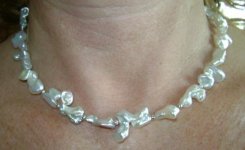J
jerin
Guest
Do the mussels/mollusks survive the harvesting or not?
Something I have wondered for a long time is whether the mussels survive the harvesting or not.
I know that Akoyas do not survive the harvest but South Sea oysters and freshwater mussels are seeded more than one time and having perhaps 16 nuclei on both sides (the freshwater mussels) I can?t see how they possibly can survive when there are so many pearls to be harvested as the shell has to be opened rather wide? This stress alone should be quite deadly for the poor animal.
I saw a Paspaley video about harvesting of a South Sea pearl and the oyster was totally opened, so the poor animal must have died. Can tell us more about this, thanks.
Something I have wondered for a long time is whether the mussels survive the harvesting or not.
I know that Akoyas do not survive the harvest but South Sea oysters and freshwater mussels are seeded more than one time and having perhaps 16 nuclei on both sides (the freshwater mussels) I can?t see how they possibly can survive when there are so many pearls to be harvested as the shell has to be opened rather wide? This stress alone should be quite deadly for the poor animal.
I saw a Paspaley video about harvesting of a South Sea pearl and the oyster was totally opened, so the poor animal must have died. Can tell us more about this, thanks.


